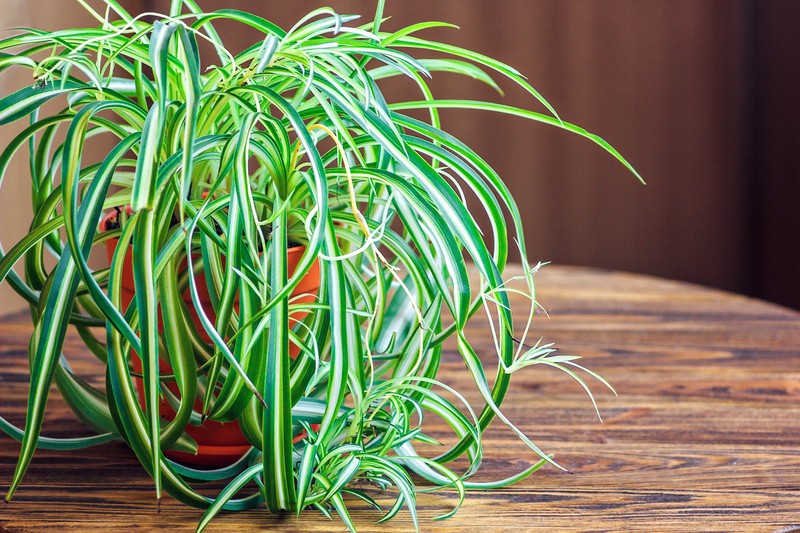Turn Your UK Garden Into a Tropical Oasis With These Hardy Exotics
Dreaming of lush foliage, vibrant flowers, and an exotic escape right at your doorstep? Transforming your UK garden into a tropical haven is not only achievable--it's also easier than you might think. By selecting the right robust exotics, you can enjoy a striking, low-maintenance tropical paradise that thrives even in British weather. This comprehensive guide will reveal the top hardy exotic plants, landscaping tips, and essential care advice to help you unlock the full potential of your tropical garden oasis.
- Why Create a Tropical Oasis in the UK?
- What Makes a Plant 'Hardy Exotic'?
- The Best Hardy Exotic Plants for UK Gardens
- Designing Your UK Tropical Oasis
- Planting and Caring for Hardy Exotics
- Winter Protection Tips
- Finishing Touches: Accessories & Water Features
- Frequently Asked Questions (FAQs)
Why Create a Tropical Oasis in the UK?
British gardens are traditionally defined by neat lawns, classic blooms, and a sense of understated elegance. Yet, the trend for creating tropical-style gardens is growing rapidly in the UK. There are several compelling reasons why gardeners are drawn to hardy exotic plants and a more adventurous palette:
- Visual Drama: Large leaves, bold forms, and unusual textures create eye-catching contrasts in your outdoor space.
- Year-Round Interest: Many hardy exotics are evergreen or offer impressive structure, keeping your garden attractive through every season.
- Low Maintenance: Once established, many exotics are surprisingly easy to care for, even in unpredictable British climates.
- Wildlife Friendly: Exotic gardens can attract pollinators and provide shelter for garden fauna.
- An Escape at Home: With the cost of travel rising, why not bring the tropics to your own backyard?
What Makes a Plant 'Hardy Exotic'?
The term "hardy exotic" might sound like a contradiction. However, many plants from subtropical and temperate zones boast a truly exotic look and the hardiness to survive UK winters. In essence, hardy exotics are:
- Plants with impressive tropical-style foliage or flowers
- Capable of surviving UK's frost, wind, and rain
- Relatively easy to care for when placed in the right position
This opens up a world of possibility for British gardeners seeking that lush, tropical oasis garden feel--without endless overwintering or costly heating.
The Best Hardy Exotic Plants for UK Gardens
Ready to add some wow-factor to your garden design? Here are the top plants for creating hardy tropical gardens in the UK. All can endure typical southern UK winters with minimal protection, and most will thrive as far north as Scotland with careful placement.
1. Trachycarpus fortunei (Windmill Palm)
This is arguably the ultimate hardy palm for UK gardens. With beautifully fan-shaped leaves and a tough constitution, Trachycarpus fortunei copes with temperatures as low as -15?C. Mature specimens can add real height--up to 12m--while younger plants add instant tropical glamour.
2. Fatsia japonica (Japanese Aralia)
If you want dramatic, glossy foliage, Fatsia japonica delivers in spades. Its large, palmate leaves stay lush and evergreen all year, and the plant tolerates shade or sun. Hardy to around -10?C, it works well in containers or borders.
3. Banana Plants (Musa basjoo)
The Musa basjoo- Japanese Hardy Banana - is the best banana for UK gardens. Able to survive down to -10?C (though the leaves die back in cold), it rockets up to 4m in a single summer, creating a striking tropical focal point.
4. Dicksonia antarctica (Tree Fern)
With enormous feathery fronds and an ancient, primeval look, the Tree Fern brings lush, deep rainforest vibes. Tree ferns do best in shade or dappled sun with moist, humus-rich soil. Hardy down to -10?C with a little winter wrapping around the crown.
5. Phyllostachys nigra & Other Hardy Bamboos
Bamboo is unbeatable for its instant tropical effect. Phyllostachys nigra (Black Bamboo) is among the classiest, sporting jet-black canes and delicate foliage, hardy down to at least -18?C. Use clumpers like Fargesia for non-invasive, low-maintenance screens or backgrounds.
6. Tetrapanax papyrifer (Chinese Rice Paper Plant)
This spectacular plant boasts huge, hand-shaped leaves--sometimes up to 1m across! Tetrapanax is robust, architectural, and is increasingly popular with tropical garden designers. Hardy to -10?C once established.
7. Cordyline australis (Cabbage Palm)
With its palm-like trunk and tufts of sword-shaped leaves, the Cabbage Palm imparts an instant seaside-exotic look to the UK garden. It's fast-growing, wind-resistant, and, established, copes with lows of -9?C.
8. Eucomis (Pineapple Lily)
For dramatic, outlandish flowers, few exotics can beat Pineapple Lilies. Their star-shaped purple or white flowers and spiky tops resemble tiny pineapples. Best grown in sun and given mulch in winter, they are hardy down to -6?C.
9. Melianthus major (Honey Bush)
Distinctive, jagged, silver-blue leaves give Melianthus its strange, prehistoric air. The sweetly-scented plant can reach 2m high in a season and rewards with bold red flowers in sunny sites. Hardy in coastal areas or with winter protection elsewhere.
10. Canna indica & Hedychium (Ginger Lily)
For vibrant colour, Cannas and Ginger Lilies are unrivalled. Both produce lush banana-like leaves and tall flower spikes. Most varieties need winter mulch, but many are tough enough for most of England's climate.
Designing Your UK Tropical-Style Garden
With the right plants chosen, garden design is the key to making your space feel like a genuine tropical getaway. Here are some expert design strategies for a wow-factor hardy exotic oasis:
Layering & Density
The heart of a tropical garden is lush, layered planting. Mimic the jungle by combining tall "canopy" plants (tree ferns, bananas, palms) with mid-level shrubs (Fatsia, bamboo) and low-level ground cover (Hosta, ferns, Heuchera). This creates depth and an enveloping, immersive feel.
Strong Contrasts
- Set bold-leafed plants against finer, more delicate foliage (e.g. banana leaves and bamboo)
- Mix upright and arching forms for movement
- Play with leaf colour: deep greens, silvers, maroon, and crisply variegated types
Water Features & Pathways
Water is essential for a truly exotic effect. Add a small pond, bowl fountain, or rill to your design. Meandering paths through dense planting evoke the feel of a rainforest hideaway.
Maximise Microclimates
Use walls, fences, and evergreen plantings to create sheltered, sunny pockets where less hardy exotics can thrive. Microclimates often let you push the boundaries in colder regions of the UK.
Planting and Caring for Hardy Exotic Plants in the UK
Hardy tropical plants are generally not fussy, but a little attention at planting will ensure success. Here's how to establish and maintain your exotic garden:
Soil Preparation
- Drainage is key - Exotics hate soaking, cold soils. Dig in organic matter to hold moisture yet allow excess water to escape.
- Add slow-release fertiliser at planting time for robust growth.
Positioning
- Shelter from wind using fences, walls, or companion planting.
- Most exotics prefer sun or part-shade - but check the needs of each plant.
- Use microclimates near south- or west-facing walls for marginal plants.
Watering
- Keep new plants well-watered during establishment.
- Mulch annually - this helps maintain soil moisture and temperature.
Feeding
- Feed with balanced liquid fertiliser during the growing season for lush growth.
- High-potash feeds encourage flowering in Cannas, bananas, and gingers.
Winter Protection: How to Keep Exotics Thriving
Most of these robust tropical plants handle average UK winters with minimal fuss. However, a bit of protection is a wise investment, especially in harsher regions:
- Mulch the base of bananas, gingers, and Canna with thick compost or bark for insulation.
- Wrap tree fern crowns in straw or fleece in severe cold.
- Lift and store tender exotics (like some Cannas) in a frost-free spot until spring.
- Move container plants against walls or under cover, where possible.
- Avoid winter wet: Ensure all exotics are not sitting in waterlogged soil.
Pro Tip: The more established a plant, the hardier it becomes. Young plants might need more coddling in their early years.
Finishing Touches for Your UK Exotic Garden
Beyond plants, a truly immersive tropical oasis look comes down to detail. Try these ideas:
- Water Bowls or Small Ponds: Even tiny water features boost humidity and wildlife.
- Boulders, Pebbles, or Gravel: Naturalistic hard landscaping complements bold planting.
- Tiki Lanterns or Solar Spots: Light up paths and specimen plants for evening impact.
- Bamboo Fencing or Screening: Perfect for a secluded, private feel.
- Bold Outdoor Furniture: Add a splash of vibrant colour with tropical cushions and swinging chairs.
- Artistic Pots & Sculptures: Choose Polynesian, Balinese, or jungle motifs for authenticity.
Accessorize thoughtfully-- but always let the tropical plants shine as the main attraction!
Frequently Asked Questions: Creating a UK Tropical Oasis
Will hardy exotics really survive British winters?
Yes! Many of the best exotics are fully hardy in most of the UK when mature. For extra margin, always plant in spring and give some winter cover for the first few years.
Can I grow exotic plants in containers?
Absolutely. Palms, bamboos, Fatsia, Cannas, and bananas all do well in large pots--move to shelter in winter if needed.
What if I garden in a cold or exposed area?
Choose the hardiest exotics (Trachycarpus, Fatsia, Phyllostachys) and focus on dense planting plus good windbreaks. Many plants do better than expected if kept out of wind and winter wet.
Do exotic gardens attract pests?
Some, like slugs (especially with hostas and bananas), but generally fewer problems than traditional gardens. Healthy, vigorous plants resist most issues.
How quickly will my tropical garden mature?
With good soil, feed, and water, hardy exotics grow quickly, and many will look lush in just 2-3 years. Perennials like Canna and banana fill out fast each summer.
Conclusion: Enjoy Your Own UK Exotic Paradise
Turning your UK garden into a tropical oasis is entirely within reach, thanks to the exciting range of hardy exotic plants now readily available. By choosing the right species, planning your layout, and giving a little winter care, you'll create a lush, dramatic, and truly unique garden escape that delights through every season. Embrace bold foliage, innovative plant combinations, and a little adventure--your very own British tropical paradise awaits!
Ready to get started? Visit your local garden centre, search out specialist nurseries, or join online forums for UK tropical gardeners. Don't be afraid to experiment--the rewards are breathtaking, all year round!
Happy gardening in your new tropical oasis!





